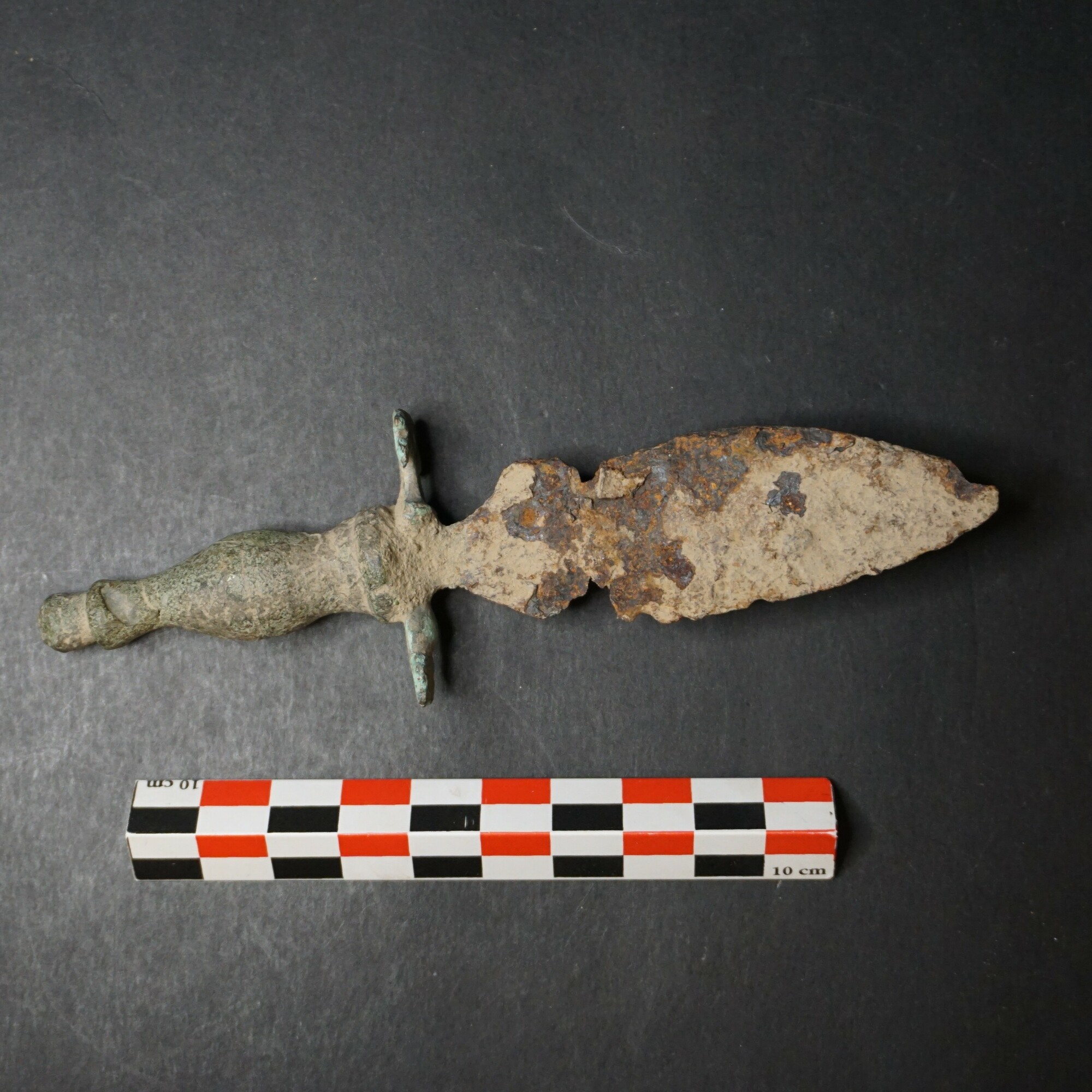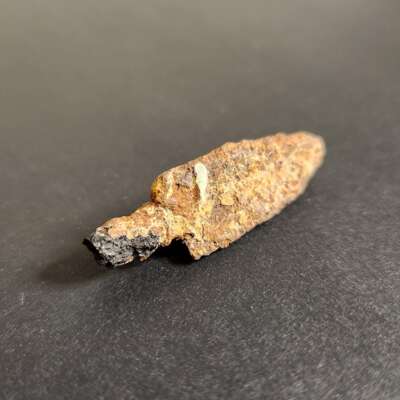Bronze and Iron: A Comparison
Bronze and Iron: A Comparison
Author: Rhys Tushingham
Date: October 6th, 2023
Historians have long divided early history into the Bronze Age (3500 BCE) and the Iron Age (1000 BCE onward). These metals served many purposes, and were used to make all sorts of objects ranging from swords and armor to farming plows. This article explores the differences between these two fundamental metals, covering their use in the past, and preservation today.
Differences in acquisition:
Tin, needed to produce bronze, was difficult to obtain for the Bronze Age civilizations in the eastern Mediterranean. Most tin was acquired through trade routes from far-off western European or Afghan mines. Iron mines were abundant locally, making iron much easier to acquire than bronze, and contributing to its widespread adoption by the first millennium BCE. What good is an army if it cannot be equipped?
Since it was harder to obtain, bronze was symbolic of the wealth and prosperity of the elite class in Bronze Age civilizations, while iron was the metal of the working class. The Bronze Age Collapse in the 1100s BCE also contributed to the widespread replacement of bronze with iron, mostly due to the resulting disruption of the tin trade routes.
Differences in smelting:
Bronze is made by combining copper and tin at a ratio of approximately 9:1, while iron is made by melting and purifying iron ore. The iron smelting and forging process was more difficult and time intensive. For example, the temperature needed for wrought iron requires a furnace temperature of 1482℃, versus bronze at ~920℃.
Innovations in later centuries made ironworking more efficient and effective. For example, cast iron is thought to have been used by the Zhou Chinese as early as the 400s BCE. Successive innovations in the heating process, starting in the 1000s BCE and lasting into the Renaissance, allowed for much higher temperatures in blast furnaces.
Differences in strength:
Bronze, an alloy of copper and tin, is much stronger than either metal on their own. Due to the mixing of metals, bronze was superior in strength to pure iron until more sophisticated smelting techniques were developed in the Iron age and beyond.
High-temperature blast furnaces allowed for a more effective purification process, and meant that iron and carbon could be combined, which created a stronger steel alloy. Moreover, new casting techniques also made iron easier to produce and use in large quantities. This, combined with its abundance, made iron the obvious choice over bronze. Iron is also lighter than bronze, which is very valuable when used in armor and weaponry.
Differences in degradation:
Bronze disease is caused by a positive feedback loop of the corrosion of the copper-tin alloy. The chemical process of bronze disease is not fully understood. Organ (1963) suggests that naturally occurring cuprous chloride (Cu(I)Cl) in the alloy reacts with water in the air, creating hydrochloric acid (HCl) that further corrodes the rest of the copper, creating the green powdery copper chloride. The roof of the Canadian Parliament Building and the Statue of Liberty are green for the same reason.
Rust is caused by iron reacting with oxygen in the air in the presence of water to form iron oxide (Fe2O3), which is reddish in colour.
Differences in preservation:
Bronze can be preserved by storing the artefacts in a climate-controlled environment, ideally under 35% humidity. This is a costly process, especially for large amounts of bronze artefacts. Iron artefacts can be preserved with light oil finishes like tannic acid or waxes, which slow the transfer of water and oxygen to the iron surface.
Conclusion:
Throughout history bronze and iron were used for hundreds of purposes. Their different properties forced humanity to innovate and adapt, facilitating the development of human civilization as we know it. The widespread use of these metals has proved to be a challenge for museums in the modern age, due to their differing properties which affects how they degrade and how they should be preserved.
Bibliography
Amzallag, N. 2009. “From Metallurgy to Bronze Age Civilizations: The Synthetic Theory.” AJA 113:497-519.
Gregerson, G. 2023. “Bronze” Encyclopedia Britannica. https://www.britannica.com/technology/bronze-alloy Industrial Metal Supply Company. 2019. “Metal Melting Points.” https://www.industrialmetalsupply.com/blog/melting-point-of-metals.
Logan, J. 1987. “Care and Cleaning of Iron (Note 9/6)” Canadian Conservation Institute.
Organ, R. 1963. “Aspects of Bronze Patina and its Treatment” Studies in Conservation. 8:1-9.
Redwing, R. 2016. “Why Did it Take So Long Between the Bronze Age and the Iron Age?” Pennsylvania State University. https://www.e-education.psu.edu/matse81/node/2129.
Scott, D. 1990. “Bronze Disease: A Review of Some Chemical Problems and the Role of Relative Humidity.” Journal of the American Institute for Conservation 29: 193-206.
Wondris, E., Wente, E., and Nutting, J. 2023. "steel." Encyclopedia Britannica. https://www.britannica.com/technology/steel.


